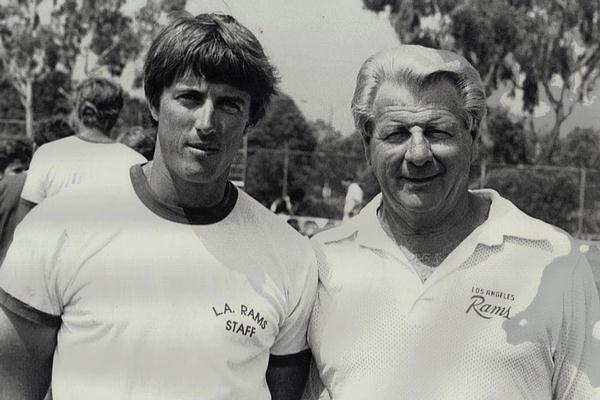
"Talking Helmets with the Equipment Manager"

"Talking Helmets with the Equipment Manager"
"Talking Helmets" with Don and Todd Hewitt, the father and son
Equipment Managers for the Los Angeles / St. Louis Rams who for the last 44
years have presided over the Rams locker room. The portion of our interview with
Don Hewitt, Todd's father, took place just prior to his passing in 2007.
 |
HH - Todd, when did you start working for the Rams?
TH - Well, my dad was hired by the Rams in 1967. I was 11 years old at the time and helped out in the locker room and was a ball boy. In 1978 I was officially hired by the Rams as Assistant Equipment Manager and continued to work with my dad until his retirement in 1984. In 1985 I took over as Rams Equipment Manager although my dad remained with the team as Equipment Manager Emeritus through 1994, the Rams final year in Los Angeles. In 1995 the Rams relocated to St. Louis. My dad joined us there for one final year. So all told, I've been with the Rams for 44 years and have worked under 14 different Rams Head Coaches! Funny, I still remember when the Packers came to town in 1967, my first year with the team. I walked down the Coliseum tunnel flanked by Vince Lombardi and Bart Starr!
HH - How many hours per week do you put in once camp began?
TH - Let's put it this way, once camp started I definitely spent more time at work than at home! In at 5AM leave at 7PM, 7 days a week. The only day I'd take off during the season is the Sunday of the bye week. The player's day off was a treat because I'd "only" work from 5AM to 4:30PM instead of 7PM. But I made up for that on game day, especially when we returned from road games, often working very late. It wasn't unusual that I spent the night at work after road games. During the off season I typically worked 5 days a week, from 6AM to 4:30PM. Actually my dad used to keep a daily journal where he recorded how many hours he worked per day over 8 hours, not including travel time, it worked out to about 170 or so 8 hour days per year!